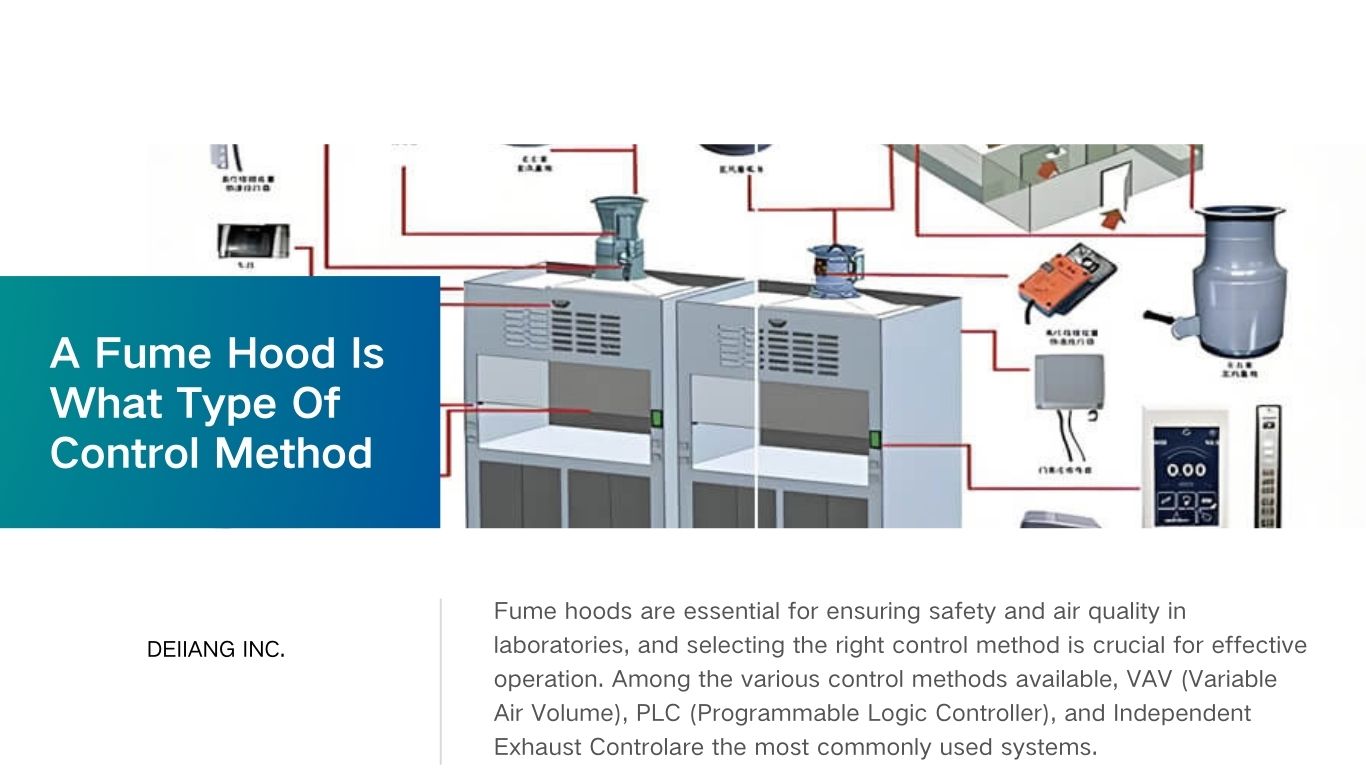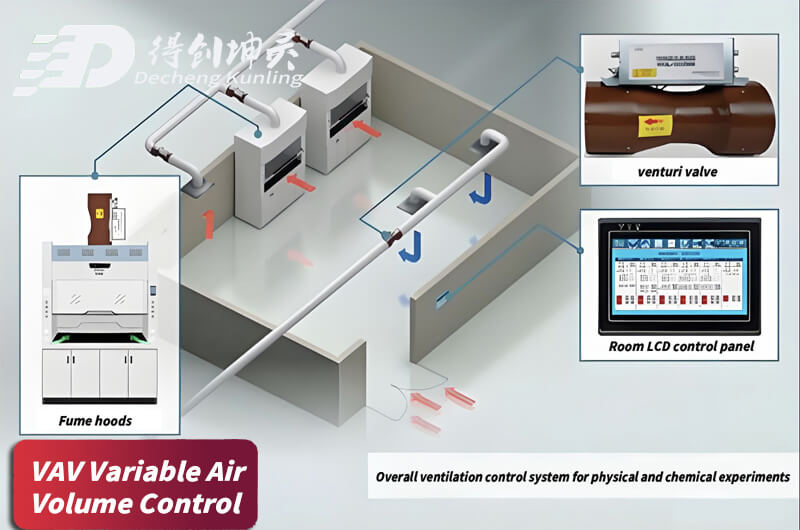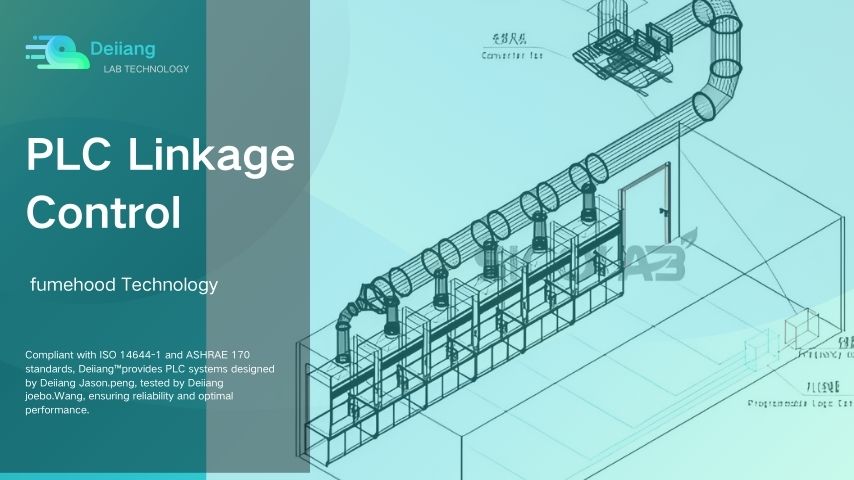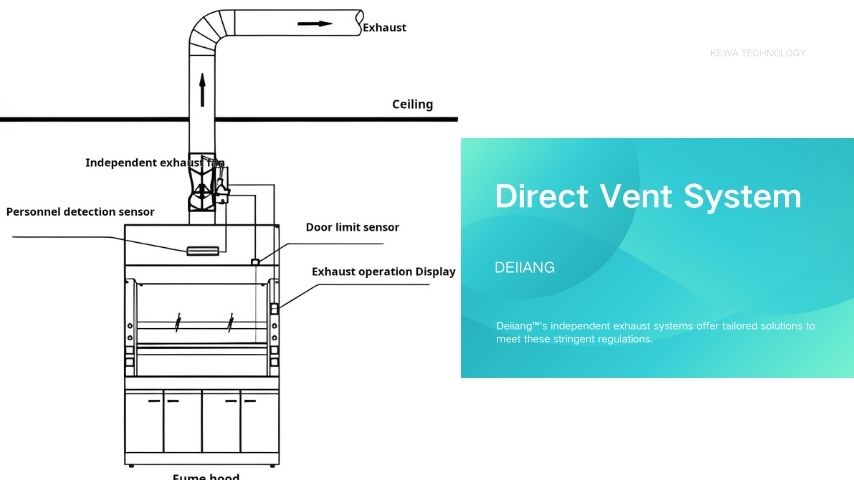Laboratory Safety Essentials
In modern laboratories, ensuring safety is paramount, and one of the critical components of this safety is the effective control of hazardous fumes and contaminants. A fume hood serves as an essential control method, protecting laboratory personnel from exposure to toxic chemicals.

This article explores the intricacies of fume hood control methods, focusing on the advanced systems enhancing their functionality and efficiency.
Fume Hood VAV Control System
A Fume Hood Variable Air volume (VAV) Control System enhances energy efficiency while maximizing safety. This intelligent system automatically adjusts the airflow based on the sash position. As the sash opens, the VAV system increases the exhaust airflow to maintain the designated face velocity, typically around 0.5 meters per second.
This system complies with standards such as ANSI/ASHRAE 110 and EN 14175, which specify optimal airflow requirements for laboratory fume hoods.

Benefits of VAV Systems
- Energy Efficiency: VAV systems reduce energy consumption by adjusting airflow dynamically.
- Consistent Safety: Maintains a consistent face velocity to ensure user safety.
- Cost-Effective: Results in significant cost savings over time through reduced energy use.
Fume Hood PLC Linkage Control System
Programmable Logic Controllers (PLC) in fume hoods facilitate an advanced level of automation and control. These systems enable fume hood integration with Building Management Systems (BMS), providing data for analytics and operational improvements.

Key Features of PLC Systems
- Real-Time monitoring: Immediate alerts and adjustments based on environmental changes.
- Data Integration: Seamless integration with BMS for optimized building performance.
- Enhanced Safety and Efficiency: Automated control reduces the risk of human error.
Fume Hood Independent Exhaust Control System

Independent exhaust systems are crucial in scenarios where fume hoods must operate without interference from the building's central ventilation. This system design ensures that eACH hood operates independently, maintaining specific exhaust requirements for varied applications.
Advantages
- Tailored Control: Customizable exhaust settings for different lab activities.
- Flexibility: Ensures optimal performance in isolated settings where central systems are impractical.
- Design Innovation: Cutting-edge technology to customize systems for specific laboratory needs.
Conclusion
Fume hoods are vital safety components in laboratory environments, with sophisticated control systems that enhance their effectiveness. From energy-efficient VAV systems to independent exhaust solutions, eACH method offers unique benefits tailored to specific laboratory needs. The incorporation of advanced technology and adherence to international standards ensures that these systems provide maximum safety and efficiency.
Fume Hood Control Systems FAQ
What is the purpose of a fume hood?
Fume hoods are designed to protect personnel from hazardous fumes by extracting them from the laboratory environment.
How does a VAV system improve energy efficiency?
It adjusts the airflow based on sash position, reducing unnecessary energy use when the hood is not in full use.
What standards are relevant to fume hood design?
Standards include ANSI/ASHRAE 110 and EN 14175, which guide airflow and safety specifications.
Can a fume hood be integrated with a BMS?
Yes, PLC systems allow for integration with BMS, enhancing monitoring and system control.
What are the benefits of independent exhaust systems?
They provide tailored control and flexibility, crucial for specific laboratory requirements.
References
- ANSI/ASHRAE Standard 110
- EN 14175 Laboratory Fume Hoods Standard
- Smart Fume Hood Solutions
- Building Management System Integration, Journal of Modern Technology
- VAV System Efficiency, Energy Conservation Research
- PLC in Laboratory Settings, Automation Today Magazine
- Independent Exhaust Control, Technical Papers
- Optimal Laboratory Design, Laboratory Equipment International
 +86 18186671616
+86 18186671616 Jason@cleanroomequips.com
Jason@cleanroomequips.com
 MENU
MENU



